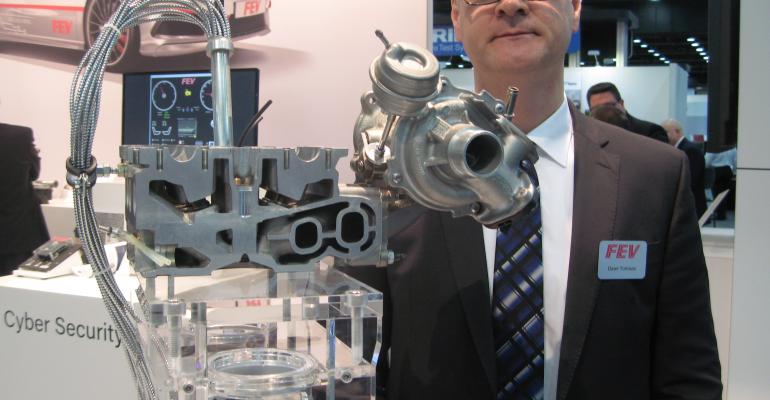DETROIT – Variable cylinder compression that aids fuel economy and cuts emissions while maintaining power delivery is headed for production within three years, a top engineer for supplier FEV North America says at the SAE World Congress here.
The company’s 2-stage variable compression-ratio system is now in testing on OEM prototypes on the road primarily in Europe, but also in the U.S., says Dean Tomazic, FEV executive vice president and chief technical officer.
The system uses two internal valves in the connecting rod to vary the con-rod length to change the compression ratio depending on load, improving thermodynamic efficiency, he explains. The system is not infinitely variable but shifts between two preset ratios that can vary the compression ratio in a 4-point range.

For instance, an engine could operate at a 9:1 ratio under higher loads or at 13:1 under lighter loads. The test prototypes represent a wide range of compression ratios, Tomazic says.
The net effect is an estimated 3%-6% reduction in carbon-dioxide emissions and a similar improvement in fuel economy, Tomazic says.
An additional benefit is the ability to set different compression ratios to achieve better efficiency when burning an alternative fuel such as compressed-natural gas. In a bi-fuel gasoline/CNG engine, the system automatically would shift to the higher compression ratio when running on CNG, avoiding the typical power and efficiency losses incurred when running CNG in a gasoline engine with a set compression ratio.
Tomazic says the FEV system uses either an electromechanical or hydraulically actuated switch to flip a 3-way valve on the connecting rod to change compression modes. The internal valves and rods don’t actually push or pull the con-rod into its different lengths, but rather the system relies on gas-force pressure on the piston to push the rod into the low-ratio mode, while vacuum in the cylinder pulls the rod into the high-ratio position.
Top-tier supplier Continental also considers variable compression-ratio systems one of the industry’s top priorities to gain powertrain efficiency.





